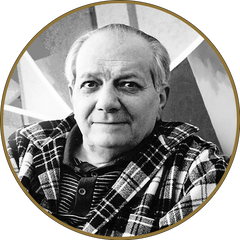Alberto Magnelli biography

Alberto Magnelli, born in 1888 in Florence, was an Italian painter. He approached painting as a self-taught artist in 1907, inspired by the great cycles of frescoes from the 14th and 15th centuries present in Tuscany. From the early years, he showed interest both in ancient painting and in the new artistic trends of the time. In 1909 and 1910, he participated in the Venice Biennale, where he had the opportunity to admire works by artists such as Gustav Klimt. In 1912, he came into contact with the Florentine Futurist avant-garde, but without officially joining the movement. In particular, he formed friendships with Ardengo Soffici, Giovanni Papini, and Giuseppe Prezzolini.
In 1913 he took a trip to Paris, where he met artists such as Pablo Picasso, Max Jacob, Fernand Léger and Guillaume Apollinaire. This Parisian stay was fundamental for his artistic formation and confirmed his aesthetic choices. During this period, his interest focused on geometric abstract painting, anticipating the times and developing an autonomous artistic language.
The works created between 1913 and 1915 reflect his search for a synthesis between form and color. In these paintings, Alberto Magnelli uses a combination of geometric shapes and vivid colors to create dynamic and balanced compositions. His painting stands out for its thoughtful intellectual reflection and the careful construction of the image.
During the First World War, Alberto Magnelli was called up for military service but did not actively participate in the conflict due to health problems. In the following years, he continued to explore geometric abstraction, always seeking a balance between form and color. His work constantly evolved but maintained a strong consistency in the pursuit of rigorous abstract painting.
After the war ended, Alberto Magnelli returned to Paris only many years later. During the period of the Second World War, he moved to Grasse with his wife Susi Gerson and joined an artistic circle that included artists such as Sonia Delaunay and Jean Arp. During this period, he also devoted himself to producing collages and paintings on slate.
In the following years, he participated in numerous exhibitions and retrospectives both in Italy and abroad. His works are exhibited in important art institutions such as the Solomon Guggenheim Museum in New York and the National Gallery of Modern Art in Rome. He received numerous awards for his contribution to abstract art, including the First Grand Prize for Foreign Painting at the São Paulo Biennial in 1955.
Alberto Magnelli died in 1971 in Meudon, at the age of 82. His artistic legacy has been widely recognized and appreciated, and he is considered one of the pioneers of European and Italian abstract art alongside other artists such as Enrico Prampolini and Atanasio Soldati. His painting, characterized by the synthesis of form and color, continues to influence contemporary artists.



